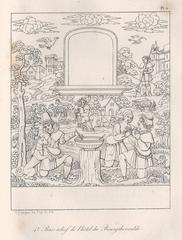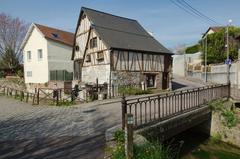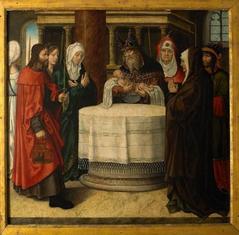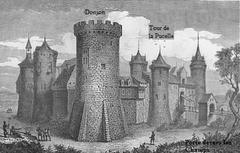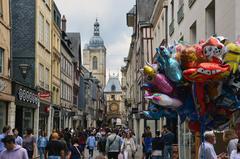
Hôtel-Dieu À Rouen: Visiting Hours, Tickets, and Historical Significance
Date: 04/07/2025
Introduction
Nestled in the heart of Rouen, France, Hôtel-Dieu is a cornerstone of the city’s medical, architectural, and cultural heritage. This historic hospital complex traces its origins to the Middle Ages and has evolved over centuries, adapting to challenges such as plagues and urban growth. Today, it stands not only as a monument to public health and neoclassical architecture but also as a vibrant cultural site housing the Musée Flaubert et d’Histoire de la Médecine and serving as the regional prefecture. Whether you are drawn by history, architecture, or literary connections, Hôtel-Dieu offers a unique window into Rouen’s past and present (Wikipedia; France-Voyage).
Table of Contents
- Medieval Origins and Early Development
- Response to Epidemics and Relocation
- 17th and 18th Century Expansion
- Modernization and Transformation
- Architectural and Heritage Significance
- Visitor Information: Hours, Tickets, Accessibility
- Nearby Attractions and Events
- Frequently Asked Questions (FAQ)
- References and Further Reading
Medieval Origins and Early Development
The first Hôtel-Dieu, known as “Hôpital Notre-Dame,” was established by 1197 near Rouen Cathedral. Managed by the Archbishop and local clergy, it became central to the city’s spiritual and medical life. By the mid-12th century, Augustinian nuns contributed to a rare mixed religious community. The hospital’s importance grew in the 13th century when it acquired the relics of Saint Mary Magdalene, eventually adopting “Hôpital de la Madeleine” as its name (Wikipedia).
Response to Epidemics and Relocation
Recurring plagues and epidemics highlighted the inadequacy of the original hospital, which was cramped and unsuited for disease control. In 1569, Rouen acquired new land west of the city walls to build a more spacious facility. Temporary structures were erected during crises, but it was not until after a devastating fire in 1624 that permanent construction began. By 1654, the new Hôtel-Dieu started to take shape, designed to meet the health demands of a growing population (France-Voyage; Patrimoines Rouen Normandie).
17th and 18th Century Expansion
Architect Abraham Hardouin’s design introduced two U-shaped buildings with a central courtyard, focusing on hygiene and patient care—progressive for the period. The site expanded in the 18th century, with the addition of the neoclassical Église de la Madeleine (1767–1781), a landmark of Rouen’s architectural scene (France-Voyage).
Modernization and Transformation
The hospital near the cathedral closed in 1758, and the current Hôtel-Dieu became Rouen’s principal hospital until the late 20th century. It played a central role during advances in medicine and public health. Gustave Flaubert, the renowned novelist, was born here in 1821, and his birthplace is now part of the museum dedicated to medicine and his literary legacy (Rouen.fr; The Crazy Tourist). In 1988, healthcare services moved to the CHU Charles-Nicolle, and the Hôtel-Dieu was restored for administrative use, becoming the seat of the Seine-Maritime Prefecture in 1995. The complex is protected as a historical monument (Monumentum).
Architectural and Heritage Significance
Hôtel-Dieu is a textbook example of classic French hospital architecture, with its neoclassical church, symmetrical courtyards, and functional design. The integration of religious, medical, and administrative roles reflects the site’s unique evolution. Key heritage features include:
- Église de la Madeleine: Noted for its Corinthian columns and temple-like façade (culture.gouv.fr).
- Salle des Actes: An 18th-century ceremonial hall with original woodwork.
- Historic Pharmacy and Kitchen: Preserved for public viewing.
- Gardens and Courtyards: Restored as tranquil green spaces.
The complex is recognized as a Monument Historique, with the church listed in 1910 and the main buildings in 1932 (Monumentum).
Visitor Information: Hours, Tickets, and Accessibility
General Information
- Address: 1 Place Saint-Hilaire, 76000 Rouen, France
- Getting There:
- By Train: 15-minute walk from Gare de Rouen-Rive-Droite
- By Public Transport: Served by TEOR T1, T2, T3; multiple bus and metro lines (Normandie Lovers)
- By Car: Parking available in city center; walking recommended in pedestrian areas
Visiting Hours
- Hôtel-Dieu Complex: Access to administrative areas is free during business hours; guided tours and special openings occur during events such as European Heritage Days (Journées du Patrimoine).
- Musée Flaubert et d’Histoire de la Médecine: Open Tuesday–Sunday, 10:00 AM–6:00 PM. Closed Mondays and select holidays (Musée Flaubert).
Tickets and Admission
- General Entry: Free access to the grounds and administrative sections
- Museum Admission: Modest fee (discounts for students, seniors, groups); free on some days—check the website (POP Culture)
- Guided Tours: Available during special events or by appointment; recommended for in-depth exploration
Accessibility
- Most main areas and the museum are wheelchair accessible, though some historic sections have limited access. Assistance is available on request.
Facilities
- Restrooms: Public facilities on-site
- Cafeteria: Open during standard hours with light refreshments
- Gift Shop: Not available; local information kiosks in the main lobby
Nearby Attractions and Events
Hôtel-Dieu is ideally situated for exploring Rouen’s medieval quarter, including:
- Notre-Dame Cathedral: Renowned Gothic landmark (Normandie Lovers)
- Gros-Horloge: Iconic astronomical clock and historic street
- Place du Vieux-Marché: Site of Joan of Arc’s martyrdom
Special events, such as the Médiévales de Rouen and Fêtes Jeanne d’Arc, often include access to Hôtel-Dieu’s historic spaces (Médiévales de Rouen).
Practical Tips for Visitors
- Best Time to Visit: Spring and autumn for fewer crowds; summer for festivals
- Booking: Advance reservations recommended for guided tours and special events
- Dress Code: Modest attire advised, especially in the chapel or during hospital hours
- Photography: Permitted in most public and museum areas; restrictions apply in sensitive zones
Frequently Asked Questions (FAQ)
Q: What are the Hôtel-Dieu visiting hours?
A: Administrative areas: business hours; museum: Tuesday–Sunday, 10:00 AM–6:00 PM; special hours during events.
Q: Is there an entrance fee?
A: Grounds are free; museum charges a small admission fee.
Q: Are guided tours available?
A: Yes, during heritage days and by arrangement via the tourist office.
Q: Is Hôtel-Dieu wheelchair accessible?
A: Most main areas and the museum are accessible; some historic zones may be limited.
Q: Can I visit independently?
A: Museum visits are independent; historic sections require a guided tour or event participation.
Q: How do I get there?
A: Easy access by train, bus, metro, or walking from city center.
References and Further Reading
- Wikipedia
- France-Voyage
- actu.fr
- culture.gouv.fr
- Normandie Lovers
- Journées du Patrimoine
- Musée Flaubert et d’Histoire de la Médecine
- POP Culture
- Rouen Official Tourism Website
- The Crazy Tourist
Plan your visit to Hôtel-Dieu Rouen and experience centuries of medical, architectural, and cultural evolution. For the latest updates, check the official tourism sites and consider joining a guided tour for a deeper understanding of this remarkable Rouen historical site.


